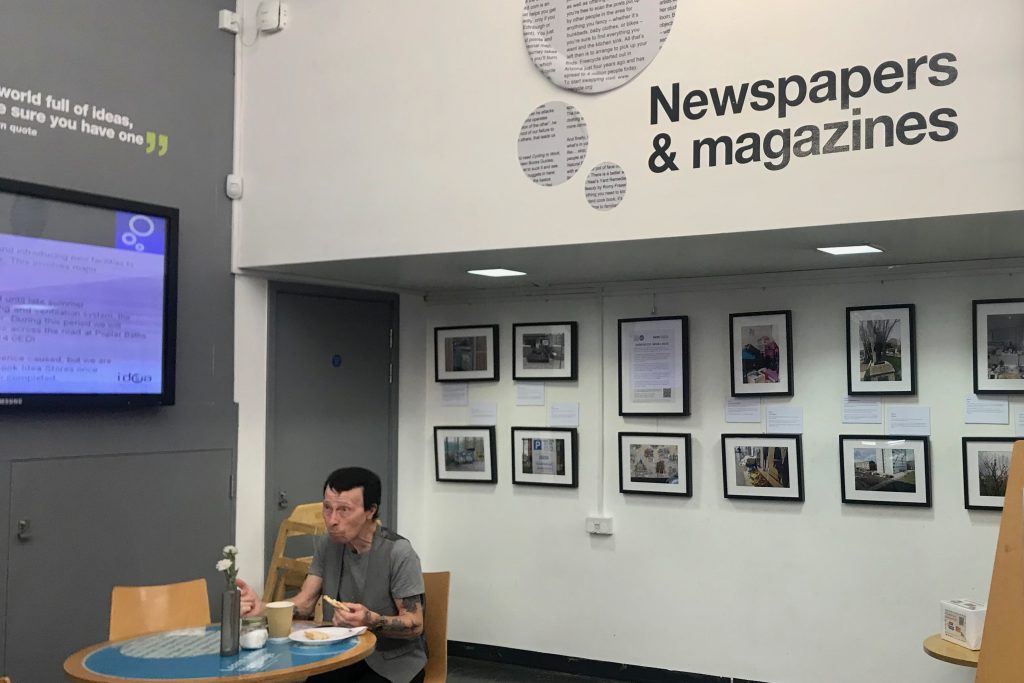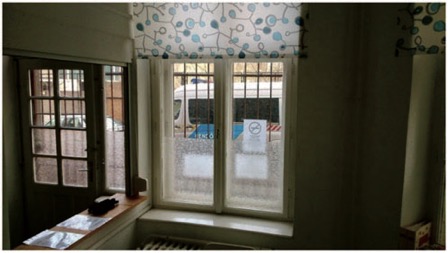Ideas Store, Gladstone Place, Roman Road, Bow, London E3 5EU.
18th Sept – 10th October 2019.


I was interested to see how the outcomes of a photovoice style community research project could be presented as a public exhibition. This work was part of a research project on the relationship between housing and health in Tower Hamlets. It is stated that:
‘The eight exhibitors have used photography to capture their experiences, thoughts and feelings on the topic of housing in their community and in their own home. Issues explored included whether residents have experienced any changes since the introduction of the cuts to public spending particularly affecting the budgets of local government.’ [online]
As, I think, with all photovoice type work (where making and discussing images is at the core of exploration of participants’ lifeworlds), there is a tension between the role of images in the process and the use of images as (exhibitible) outcomes. Fitzgibbon and Stengel (2018) note that the nature of images produced by participants (which can relate to sensitive aspects of their everyday lives) combined with the interdiction placed on images of people where anonymity has been promised, limits which images can be used in accounts of the outcomes of photovoice studies. In their own work, these images may, for instance, represent or infer illegal activities, or situations that might threaten the safety of participants. The images used in the account of their research are consequently apparently mundane and difficult to interpret (the significance of the image lies in the account of the participant). The weight of communicating outcomes rests, as a consequence, on the text, with images playing a very minor part.

The images in this exhibition are similarly mundane, and reliant upon the text to make the message of each image explicit. There is little in the way of surprise (the concerns of the residents are much as would be expected) or challenge in either the text or the images (though it would have been interested to see a selection of images without the accompanying text). This particular exhibition thus raises question about both the photovoice process as an effective approach to insightful, coherent and convincing research, and as a means of producing powerful images. The exhibition on its own falls short of achieving the aim ‘to stimulate dialogue between residents, policy makers and practitioners’. As Liebenberg (2018) argues, photovoice can be a powerful approach to research and social change, but to achieve this it needs to be conceived, and operationalised, as a form of participatory action research.
References
Fitzgibbon, W. and Stengel, C. M. 2018. ‘Women’s voices made visible: Photovoice in visual criminology’, Punishment and Society, 20(4), pp. 411–431.
Liebenberg, L. 2018. ‘Thinking critically about photovoice: Achieving empowerment and social change’, International Journal of Qualitative Methods, 17(1), pp. 1–9.
